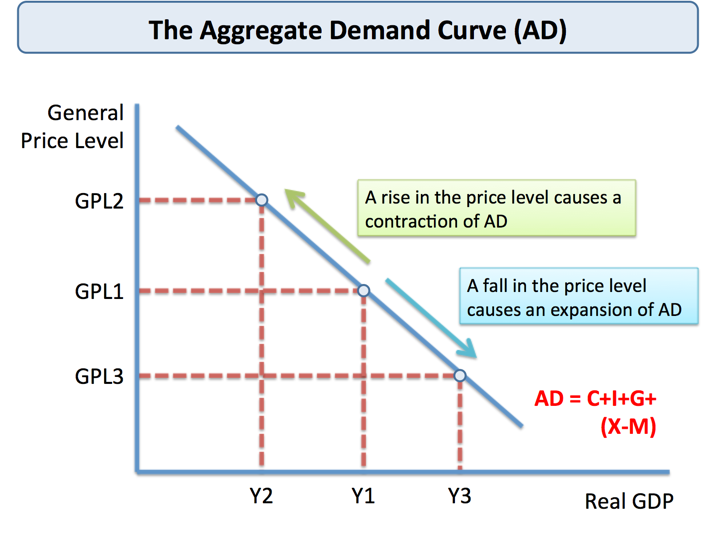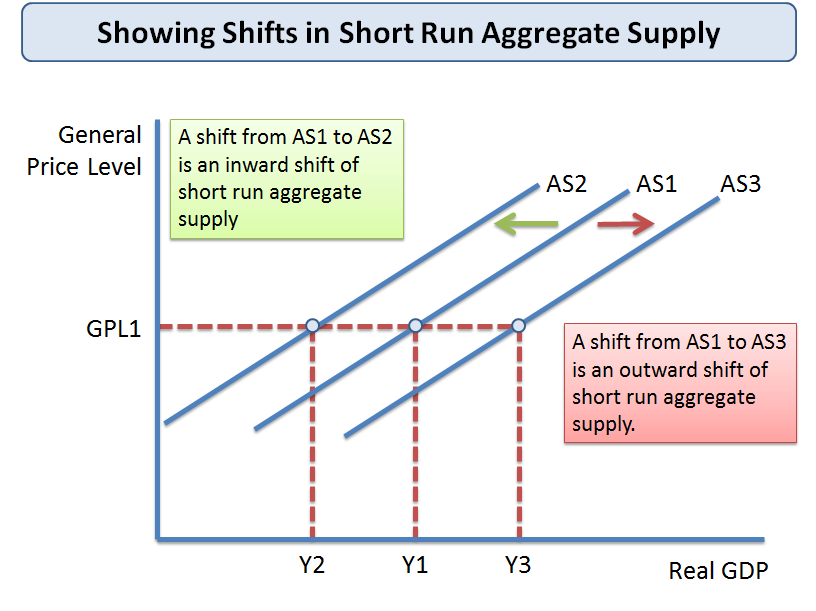
Determinants of Effective Demand
According to Keynes full employment is not a normal situation as stated in the Classical theory. He argued that the economy’s equilibrium level of output and employment may not always correspond to the full employment level of income. It is possible to have a macroeconomic equilibrium at less than full employment. If the current level of aggregate demand (expenditure) is not adequate to purchase all the goods produced in the economy (i.e a situation of excess supply) then the output will be cut back to match the level of aggregate demand.
Keynes’s theory of the determination of equilibrium income and employment focuses on the relationship between aggregate demand (AD) and aggregate supply (AS). According to him, equilibrium employment (income) is determined by the level of aggregate demand in the economy, given the level of aggregate supply. Thus, the equilibrium level of employment is the level at which aggregate supply is consistent with the current level of aggregate demand. The theory believes that “demand creates its own supply” rather than the Classical claim of “supply creates its own demand”.
In the following sections, we discuss Keynes’ concepts of aggregate demand function, aggregate supply function and finally, the point of effective demand.
Aggregate Demand Function
Aggregate demand price or function refers to the aggregate proceeds expected from a given amount of employment. Aggregate demand or what is called aggregate demand price is the number of total receipts that all the firms expect to receive from the sale of output produced by a given number of workers employed. Aggregate demand increases with an increase in the number of workers employed. The aggregate demand function curve is a rising curve as shown in the figure.

Fig: Aggregate Demand Function
It can be seen that total expected receipts are D1L1 at the OL1 level of employment. Total expected receipts increase to D2L2 with an increase in the level of employment to OL2. OLf is the full employment level. Initially, the aggregate demand function (ADF) rises sharply as an increase in the number of employment leads to an increase in society’s expenditure, thereby, increasing the producer’s expected sales receipts. There is no such increase in employment, income, expenditure and therefore producer’s expected sales receipts as the economy reaches near full-employment. The ADF curve becomes perfectly elastic (horizontal) as the economy reaches near full-employment.
Aggregate Demand In Keynes’ theory of income determination is society’s planned expenditure. In a laissez-faire economy, it consists of consumption expenditure (C)and investment expenditure (I).
Thus AD = Planned Expenditure = C + I
where,
C = f (Yd)and Yd is the level of disposable income (Income minus Taxes)
I am exogenous in the short run.
Aggregate Supply Function
Aggregate supply is determined by the physical and technical conditions of production. However, these conditions remain constant in the short run. As such, given the technical conditions, output in the short run can be increased only by increasing the employment of labor.
Aggregate supply or what is called aggregate supply price is the number of total receipts that all the firms must expect to receive from the sale of output produced by a given number of workers employed. In other words, the aggregate supply price is the total cost of production incurred by producers by employing a certain given number of workers. Obviously, aggregate supply price increases with an increase in the number of workers employed. The aggregate supply function curve is a rising curve and at full employment (OLf) it becomes perfectly inelastic as shown in the figure.

Fig: Aggregate Supply Function
It can be seen that the aggregate supply price or the cost of production is S1L1 at the OL1 level of employment. It increases to S2L2 with an increase in the level of employment to OL2. Initially, the aggregate supply function (ASF) rises slowly as labor is abundant thereby leading to a slow increase in the cost of production. Labor cost rises sharply as the economy reaches near full-employment. The ASF, therefore, rises sharply and at full employment (OLf) it becomes perfectly inelastic.
You may also like this: Importance of Effective Demand

Leave a Reply